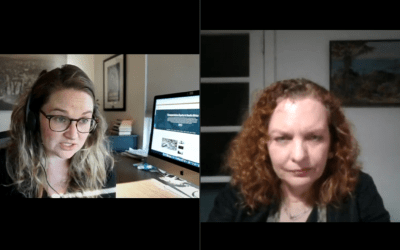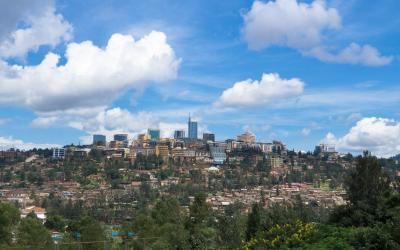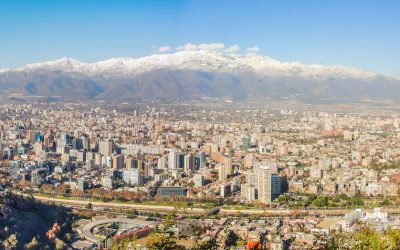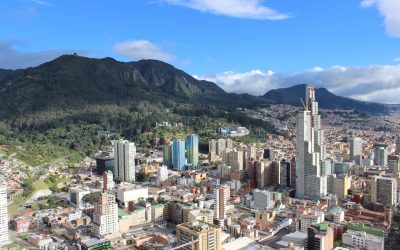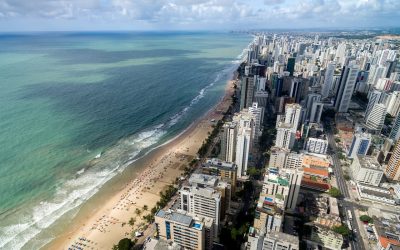Global Mobility Research
Global Mobility Research
This Global Mobility Research article series features interviews with global transportation researchers from the Volvo Research and Educational Foundation’s Future Urban Transport Program. Each month we feature a leading thinker from this network of transportation professionals. Their research looks at how mobility systems are functioning, evolving, and working in cities around the world with an eye towards emerging technology, policy and collaborative solutions.
This series was made possible by the generous support of the Volvo Research and Education Foundation.
Johannesburg and Maputo Partner to Research Transport Needs and Investments
I caught up recently with Sarah Charlton who is Associate Professor at the School of Architecture and Planning at the University of Witwatersrand in Johannesburg.
The research she is leading, located in both Johannesburg, South Africa and Maputo, Mozambique, looks at the interface between the mobility use by residents and transportation investments by the state. The question guiding her research is “are ordinary households using the transport modes that the government is investing in and prioritizing?” The research is a partnership between two universities across two countries and two cities.
Sarah reflects on research during the pandemic across languages, countries, histories and cultures.
Transportation Equity in South Africa
I spoke last week with Njogu Morgan, a post-doctoral researcher specializing in transportation equity in Africa, specifically South Africa, where he is based. As a historian, his research centers around how we can use historical context to better understand current transportation system inequities and access. He’s starting a new research network of emerging and developing scholars who are interested in mobility issues from a historical perspective.
Transit Planning and Resident Behavior: New Research
I caught up with Manuel Santana Palacios last week to discuss his recent research as a PhD candidate at UC Berkeley at the Department of City and Regional Planning with Dan Chatman. His research looks at equity within the bus rapid transit and private transportation networks in Barranquilla, Colombia and Cape Town, South Africa. His interviews with residents shed light on the tension between what planners and policy makers think will best serve residents and the factors that drive transportation behavior among residents. A few takeaways:
- Planners arrive with an assumption that large-scale transportation infrastructure project solves vexing challenges that are most pressing for residents such as a reduction in greenhouse gas emissions and safety when in fact, what residents really need are shorter travel times and affordability.
- Trunk-feeder BRT systems deliver more equitable outcomes in cities with long trunk corridors. This particular urban form compensates for additional transfer times which are often induced by the trunk-feeder BRTs.
- We need to seize this moment to really deliver transportation that meets the needs of residents. Otherwise, getting them to return to public transit after Covid-19 is over will be really difficult.
Lessons from the Lockdown in Paris
Laetitia Dablanc is a Director of Research at the University Gustave Eiffel/IFSTTAR and a member of MetroFreight, a VREF Center of excellence in urban freight research. I spoke to her recently about lessons learned from the COVID-19 lockdown in Paris.
My take aways from this 6-min video:
- She estimates that the lockdown resulted in a 30% reduction in VMT, but the effect were not lasting. Traffic is already back to pre-lockdown levels in Paris.
- The Parisian government rapidly deployed improvements in data management, traffic enforcement, bicycle lanes, and the subsidy for companies acquiring electric vehicles has been doubled – all in the last few months.
- The demand for bicycle delivery services (UberEats, etc.) has led to an expansion of gig-based jobs in this sector (and increased use of those new bike lanes!). Laetitia thinks freight companies have an opportunity here to attract these part-time, temporary workers to be full-time, longterm workers in freight if the right training programs can be established.
“With or without the pandemic, children’s safety should be a priority.” – Dr. Anne Kamau
Kenya consistently ranks among the countries with the highest traffic fatalities in the world – #18, according to the World Health Organization, and some estimates put it even higher. One of the most alarming statistics is that 1 in 10 traffic fatalities in Kenya is a child.
I recently spoke with Dr. Anne Kamau, Research Fellow at the Institute for Development Studies at the University of Nairobi, about her research on transportation and children’s safety. Her research, funded by the Volvo Research and Education Foundations (VREF), is in collaboration with Dr. Regina Obilie Amoako-Sakyi at the University of Cape Coast in Ghana.
Urban Mobility and Access to Transportation in Sub-Saharan Africa
As I started to get into the background for this work, I found that a lot of the writing was heavily focused on technical and infrastructural issues, but didn’t focus on governance, leadership, or what it takes to facilitate transformative change. This question of governance in urban transport and mobility was strongly established in the original TUT-POL project. The expansion of this research into Sub-Saharan Africa allowed us to get an inside look at differences in the governance of urban transport in this region. It enabled us to explore what works and what doesn’t and helps explain why certain places are experiencing challenges and hopefully also shed light on how to solve those challenges.
Governance of Metropolitan Transport: Power, Leadership, and the Essential Art of Building Lasting Alliances
“This whole project started because I saw that almost all presentations at the Transportation Research Board (TRB, one of seven program units of the National Academies of Sciences, Engineering, and Medicine) were about what to do to organize metropolitan transport. But there was very little about how to actually get things done. When I was visiting there, I actually asked the Chair of the TRB’s Executive Committee why, and his answer was ‘How is much more difficult than what.’ And he was right.”
Using “Pop-Up” Strategies to Realize Lasting Impacts in The Public Realm
During the Mobilize Summit, urban transport and development practitioners come together alongside world-class researchers to celebrate best practices and accelerate implementation of sustainable transport projects grounded in equity. All the panelists agreed about the need to help decision-makers trust and believe that change is possible. “For instance, everyone thought rampant bike theft in Medellín would be the inevitable downfall of our bike share program, but it just didn’t happen that way,” explained Lina. “Our early adopters were the ‘rock stars’ who helped change hearts and minds simply through their passionate embrace and adoption of cycling.”
Planning Sustainable Public Transport Using an Intersectional Lens
I work to ensure that a more diverse point of view, especially the gender-specific, informs the planning, design, operations, and user experience of transport systems. Safe and reliable access to public transport is a key driver of so many issues we face as a society. Cities cannot aspire to being inclusive unless more attention is given to this aspect of sustainable transport.
Designing Roadway Infrastructure Through the Lens of Child Safety
On offer at this year’s MOBILIZE summit were several tools, resources, and case studies of projects whose leaders aim to re-humanize public roadways and disrupt the automobile-centric culture that dominates them in many places. What follows are a few key highlights focused on advancing universally accessible improvements to the built environment.


